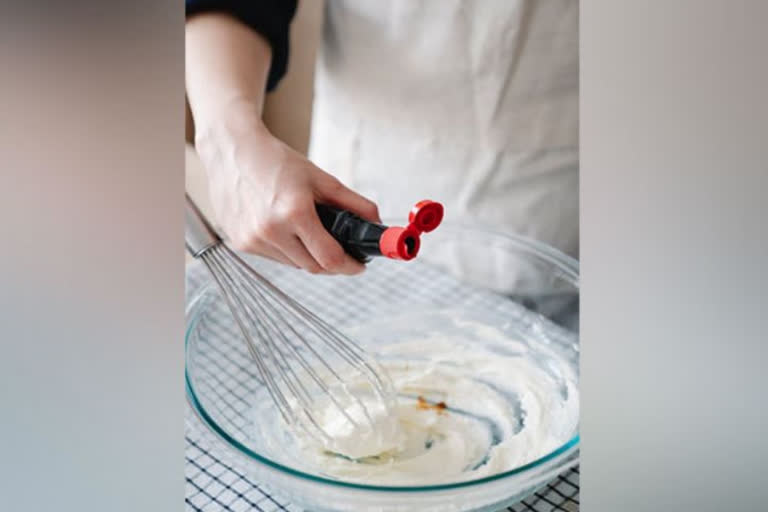New Delhi : At today's supermarkets, the baking supplies aisle will leave a buyer feeling disoriented and overrun with options. On the one hand, this is undoubtedly fantastic, but on the other, the buyer must make a wise and well-informed decision.
The number of devoted home bakers working on a modest scale increased significantly during the lockdowns due to the boom in the baking business. The answer isn't a simple yes or no when asked if Vanilla Essence is better than pure vanilla extract. Producing pure vanilla extract is extremely complicated and labour-intensive. Most people are generally drawn towards synthetic vanilla due to the marginally lower price and that's why more than 15,000 tons of pure vanillin, the main component of vanilla, are chemically manufactured each year.
Vanillin is created through a chemical process that starts with an organic compound called guaiacol which is manufactured from either petroleum or wood. Vanillin can be manufactured from guaiacol or from clove oil, wood pulp, or other sources. The main question that arises here is, does the artificially created vanilla even taste or smell like real vanilla? The short and simple answer is no but we need to go into some depth to understand the flavour and taste aspects.
To taste the difference between vanilla extract and vanilla essence, a taste test was conducted with a group of six people who were completely unaware of the ingredients used. Surprisingly all six people found the same cake to have more vanilla flavour than the other. And it was the one made with vanilla essence. Vanilla extract is made using real vanilla beans, the flavour and aroma are mild but there is richness in flavour at different levels and it is only possible if the vanilla extract, vanilla paste or real vanilla bean has been used in the preparation.
With pure vanilla extract, the flavour profile is broad and many factors like the origin of vanilla beans, grade, quality and moisture play an important part in the process. If the vanilla beans are sourced authentically and stored properly before being used in the extraction process, it guarantees an excellent quality vanilla extract. Vanilla essence, on the other hand, is purely a chemical which is manufactured industrially.
As stated earlier, the main component of vanilla is vanillin is made in labs and even a drop of it would be enough to get a strong vanilla flavour, the reason being, it is synthesised in that manner. The flavour intensity can be directly controlled whereas, in the case of vanilla extract, the whole process is natural and flavour intensity cannot be controlled since it is not made in labs. Due to this reason, the flavour and aroma in the vanilla extract are generally very mild and thus the quantity that is used in culinary preparations is much more than essences. The price also plays a crucial factor as vanilla extract can be expensive due to the reasons explained and since vanilla essence is mass manufactured in labs, it is extremely cheap and can easily be 1/10th of the price of extract.
As per the manufacturing process of vanilla essence, it might be an easy guess to find out what's actually wrong with using vanilla essence. The striking caramel colour in most vanilla essences available in the market comes from a food additive (E150) which has been at the centre of various debates/research amongst eminent food scientists as a possible carcinogen. This additive is just one example, there are many additives and chemicals like these which are added to essences. A petition was filed with the FDA in Jan 2011 to ban some caramel colourings.
As per studies published in 2003 and 2005 by NIH, National Toxicology Program, E150 was shown as a cause of cancer in mice and rats. Be informed that even when the product label says 'Vanilla Extract', you still can't be sure whether the product is pure vanilla extract. Since the extract is quite a vague term in itself, brands tend to use this to their benefit. Some brands use sugar syrup bases in their product and don't mention the sugar syrup in the ingredients.
In the US, as per FDA pure vanilla extract must contain 35 per cent alcohol by volume to be called vanilla extract but since it doesn't necessarily apply to all countries so vanilla extract by definition can mean different things as per the brands which are making it. To simplify it all, the vanilla extract must contain at least 2 ingredients; vanilla beans and any solvent (the solvent can be alcoholic or nonalcoholic in nature) in which the extract is made.
The solvent that is used must be naturally sourced or organic. If that is so, be assured you've got the right product. Going through the ingredients listed on the bottle is the bare minimum you can do to make an informed decision. If the ingredients seem confusing, contact the manufacturer and exercise your right to know the ingredients you consume. Contact details of the manufacturer must mandatorily be printed on the label, as per FSSAI guidelines. Author of this opinion piece is Fazal Qadri, Founder - Director Carmine County Pvt. Ltd. Website: www.carminecounty.com. (ANI)
(This story has not been edited by ETV Bharat and is auto-generated from a syndicated feed.)



